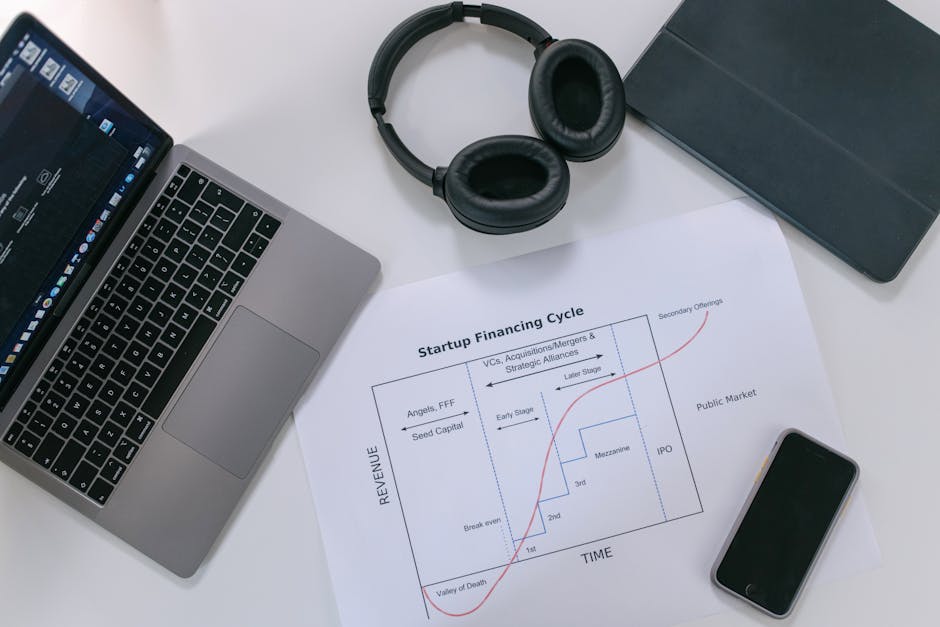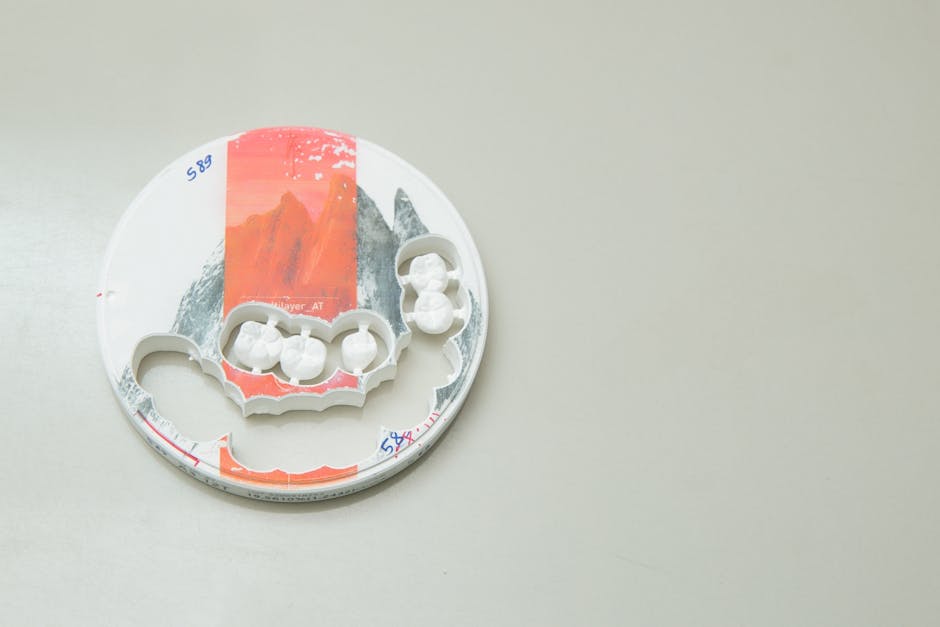7 Key Strategies for Start-up Product Development Success
You’ve heard the theory: start-up success hinges on innovative product development. But how do you turn this theory into reality? By implementing 7 key strategies.
From market research to continuous improvement, these tactics will guide you through the dynamic landscape of start-up product development, ensuring your innovation not only meets but exceeds user expectations.
Key Takeaways
- Thorough market research and validation is essential to validate product demand and ensure alinement with customer expectations.
- User-centric design and prototyping should be prioritised to gather feedback, meet user needs, and increase long-term success.
- Iterative prototyping and feedback loops help identify and rectify potential issues, enhance user experience, and accelerate time-to-market.
- Implementing an agile development methodology and promoting continuous team collaboration are crucial for flexibility, adaptation, and efficient product development.
Market Research and Validation

Start by conducting thorough market research to validate the demand for your product. Customer interviews are an essential part of this process. Engage with potential customers to understand their needs, pain points, and preferences. By gathering insights directly from the target audience, you can ensure that your product alines with their expectations and solves real problems.
In addition to customer interviews, competitor analysis is crucial. Study your competitors to identify gaps in the market and areas where your product can offer unique value. Understanding the strengths and weaknesses of existing solutions will help you position your product effectively and differentiate it from the competition.
Transitioning into the subsequent section about ‘user-centric design and prototyping’, it’s important to use the findings from market research to inform the design and development of your product. By incorporating insights from customer interviews and competitor analysis, you can create a user-centric solution that addresses specific pain points and stands out in the market. This data-driven approach will set the foundation for a successful product development journey.
User-Centric Design and Prototyping

When developing your start-up product, it’s crucial to focus on user-centric design and prototyping.
By creating iterative prototypes and seeking feedback from potential users, you can prioritise their needs and preferences.
This approach ensures that your product meets the demands of your target market, leading to greater success in the long run.
Iterative Prototyping for Feedback
Iterative prototyping is essential for gathering valuable feedback and refining your start-up product through user-centric design and testing. By incorporating user feedback into the product iteration process, you can ensure that your product meets the needs and expectations of your target audience. Here are four key reasons why iterative prototyping is crucial for the success of your start-up product:
-
Real-time User Input: Gathering feedback early and often allows you to make necessary adjustments promptly.
-
Reduced Development Risks: Iterative prototyping helps in identifying and rectifying potential issues before they become major problems.
-
Enhanced User Experience: By involving users in the design process, you can create a product that resonates with their preferences and behaviours.
-
Faster Time-to-Market: Iterative prototyping accelerates the development cycle, enabling you to bring your product to market more quickly.
Transitioning to the subsequent section about ‘prioritise user needs’, it’s important to understand how user feedback gathered during iterative prototyping informs the prioritisation of features and improvements.
Prioritise User Needs
To successfully prioritise user needs in start-up product development, you should aim to design and prototype products with a focus on user-centricity and iterative improvement. Understanding user behaviour is crucial in creating products that resonate with your target audience.
By gaining deep insights into how users interact with similar products or services, you can optimise the user experience and address pain points more effectively. User experience optimisation involves continuously refining your product based on user feedback and behaviour, ensuring that it alines with their needs and preferences.
Through user-centric design and prototyping, you can create solutions that not only meet user needs but also delight and engage them. This approach not only fosters innovation but also increases the likelihood of product success in the market.
Agile Development Methodology

When developing a product for your start-up, the Agile Development Methodology offers an iterative process that allows for flexibility in requirements and continuous team collaboration.
This approach can help you adapt to changes in the market and customer needs while maintaining a focus on delivering value.
Iterative Development Process
Implementing an agile development methodology in your start-up’s product development process can significantly improve efficiency and adaptability. Embracing an iterative development process allows for continuous refinement based on user feedback, ensuring that your product remains alined with market needs. Here’s why iterative development is crucial for your start-up’s success:
-
Agile development promotes flexibility, allowing you to adapt to changing market demands swiftly.
-
It fosters a culture of collaboration and transparency, encouraging constant communication and rapid decision-making.
-
By incorporating feedback loops, you can gather valuable insights from users, enabling you to make informed adjustments to your product.
-
The iterative approach minimises the risk of large-scale failures by breaking the development process into smaller, manageable increments, ensuring a more controlled and efficient workflow.
Embracing an iterative development approach can lead to more innovative and customer-centric products, giving your start-up a competitive edge.
Flexibility in Requirements
As a start-up, embracing a flexible approach to requirements within the agile development methodology is essential for responding to evolving market needs and ensuring continuous alinement with user feedback.
Adaptability is key to success in the dynamic landscape of product development. By being open to changes in requirements, you can swiftly respond to shifting customer demands and incorporate valuable customer feedback into the development process.
This iterative approach allows for quick adjustments and improvements, ultimately leading to a product that better meets the needs of your target audience. Embracing flexibility in requirements not only fosters innovation but also enhances the overall quality of the product by keeping it closely alined with the ever-changing customer expectations and market trends.
Continuous Team Collaboration
To achieve seamless continuous team collaboration within the agile development methodology, you should prioritise regular communication and information sharing amongst team members, ensuring a cohesive and adaptable approach to addressing evolving project requirements. Here are key strategies for effective team collaboration and communication within the agile framework:
- Utilise daily stand-up meetings to share progress, challenges, and plans.
- Embrace collaborative tools for real-time communication and document sharing.
- Foster a culture of open feedback and idea exchange to encourage innovation.
- Implement regular retrospective meetings to reflect on processes and identify areas for improvement.
Minimum Viable Product (MVP) Definition

When developing a start-up product, defining the Minimum Viable Product (MVP) is crucial for gauging market fit and minimising resource wastage.
The MVP serves as the initial version of your product with enough features to attract early adopters and gather valuable feedback for future iterations. One of the key advantages of MVP is its ability to validate your product idea with minimal investment.
By releasing a basic version of your product, you can quickly assess its market appeal and make informed decisions about further development. Additionally, MVP helps in identifying and prioritising essential features based on user response, thus preventing the unnecessary allocation of resources on non-essential elements.
However, MVP also presents challenges such as determining the right balance of features to include and maintaining a focus on core functionalities. It requires a deep understanding of customer needs and market dynamics to ensure that the MVP delivers sufficient value to early adopters while staying within resource constraints.
Iterative Testing and Feedback

How can you continuously gather and incorporate user feedback to improve your product during its development?
Iterative testing and feedback are crucial for refining your product and ensuring user engagement. Here are four key strategies to help you effectively integrate user feedback into your product development process:
-
Early Prototyping:Create early prototypes of your product to gather initial feedback from users. This allows you to identify potential issues and make necessary adjustments before investing significant time and resources.
-
User Testing:Conduct regular user testing sessions to observe how individuals interact with your product. This direct feedback can uncover useability issues and areas for improvement that may not be apparent through other means.
-
Feedback Loops:Implement feedback loops within your development process to continuously gather insights from users. This can be achieved through surveys, interviews, or feedback forms integrated into your product.
-
Agile Development:Embrace an agile development approach that allows for iterative improvements based on user feedback. This iterative process enables continuous product refinement and ensures that user engagement remains a top priority throughout the development lifecycle.
Scalable Architecture and Infrastructure

Ensure that your product’s architecture and infrastructure are designed to accommodate future growth and increased demand, allowing for seamless scalability as your user base expands. Scalability planning is essential for preparing your start-up for success.
By optimising your infrastructure, you can ensure that your product can handle an increasing number of users and data without compromising performance. Implementing efficient load balancing, utilising cloud services, and employing microservices architecture are key strategies for scalability planning.
Infrastructure optimisation involves leveraging automation, monitoring, and efficient resource allocation to support your product’s growth without incurring unnecessary costs. By focussing on scalable architecture and infrastructure from the outset, you can avoid potential setbacks and downtime as your start-up gains momentum.
As you continue to refine your product, it’s crucial to prioritise continuous product improvement to stay ahead in the competitive start-up landscape.
Continuous Product Improvement

To achieve continuous product improvement, consistently gather and analyse user feedback for actionable insights. This is crucial for staying ahead of the curve and delivering a product that meets the evolving needs of your customers. Here’s how you can effectively implement continuous product improvement:
-
Embrace Lean Manufacturing Principles: Apply lean methodologies to streamline your product development processes. Eliminating waste and optimising efficiency will enable you to make incremental improvements without unnecessary delays.
-
Prioritise Quality Control: Implement robust quality control measures to ensure that each iteration of your product maintains or exceeds the expected standards. This proactive approach will help prevent defects and customer dissatisfaction.
-
Foster a Culture of Innovation: Encourage a work environment where creativity and out-of-the-box thinking are valued. This will empower your team to propose and implement innovative ideas for product enhancement.
-
Iterate Based on Data: Use data-driven insights from user feedback and performance metrics to drive your product improvement efforts. This approach ensures that your enhancements are grounded in real user experiences and preferences.
Frequently Asked Questions
How Can Start-ups Effectively Manage Their Resources and Budget During Product Development?
You can effectively manage your resources and budget during product development by carefully allocating resources based on priority and need. Track spending regularly, and be open to adjusting your budget as necessary for success.
What Are Some Common Pitfalls to Avoid When Scaling a Product for a Larger User Base?
When scaling for a larger user base, common pitfalls include underestimating resource needs and misallocating budget. Scalability challenges may arise from not planning for increased demand. Ensure resource management and budget allocation aline with growth goals.
What Strategies Can Start-ups Use to Attract and Retain Top Talent for Their Product Development Team?
To attract talent, showcase your innovative vision, offer autonomy, and provide opportunities for growth. Retain top talent by fostering a culture of collaboration, recognising their contributions, and offering competitive compensation with potential for equity.
How Can Start-ups Effectively Prioritise Features and Updates for Their Product to Meet Customer Needs and Market Demands?
To effectively prioritise features and updates for your product, start by listening to user feedback and conducting thorough market research. Embrace agile development to adapt quickly to customer needs and market demands. Stay innovative!
What Are Some Key Considerations for Start-ups When Choosing the Right Technology Stack for Their Product Development?
When choosing a technology stack for your start-up’s product development, consider scalability, flexibility, and community support. Embrace Agile development methodologies to adapt to changing needs. Prioritise innovation and efficiency to stay ahead in the competitive market.
Conclusion
So there you have it, 7 key strategies for start-up product development success. Just follow these simple steps and you’ll be on your way to fame and fortune in no time!
And if all else fails, just remember, failure is just a stepping stone to success.
Happy developing!
Contact us to discuss our services now!
